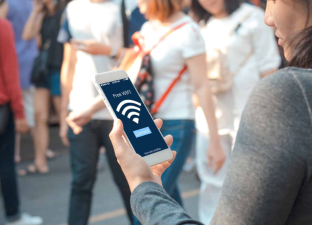
Widespread public Wi-Fi coverage in cities provides convenience for residents and tourists, but it also presents a series of concerning issues.
What are the information security risks associated with public Wi-Fi?
- Network eavesdropping
Public Wi-Fi is typically unencrypted. Attackers can use technical means to eavesdrop on data transmitted over it, stealing user accounts, passwords, and other sensitive personal information, thereby committing crimes.
- Fake hotspots
Attackers can set up fake hotspots with names similar or identical to those of public Wi-Fi, misleading users into thinking they are connected to legitimate Wi-Fi. Once connected, the attackers can access all the information they enter.
- Malware attacks
Attackers can send malware to user devices via public Wi-Fi. Once users click on links or download malware, their devices become infected with viruses or Trojans, allowing the attackers to take control.

Authentication and Privacy: Cumbersome Processes and Data Abuse
- Complex Authentication Process
Some public Wi-Fi requires SMS verification, downloading a dedicated app, or requiring users to follow a public account, resulting in a poor user experience. Although cities like Shenzhen have implemented a "one-time authentication, global roaming" policy, most cities still face cumbersome authentication procedures. 2. Excessive Collection of Private Data
Some WiFi operators collect user phone numbers, device information, and other information through authentication pages, and even share them with third parties for advertising purposes.
Recommendations
- User Level
◦ disable your phone's automatic WiFi connection function to avoid accidentally connecting to phishing hotspots.
◦ Prefer encrypted networks (such as WPA3) and avoid performing sensitive operations such as payments on public WiFi.
◦ Regularly change your account password and install security software to monitor network risks.
- Management and Technical Level
◦ Promote new technologies such as WiFi7 to optimize bandwidth allocation and load balancing.
◦ Simplify the authentication process, implement a unified authentication platform, and implement seamless roaming.
◦ Strengthen equipment maintenance, establish fault response mechanisms, and improve network stability.
The development of urban public WiFi requires a balance between convenience and security. Only through technological upgrades, standardized management, and user education can it truly benefit the public.
